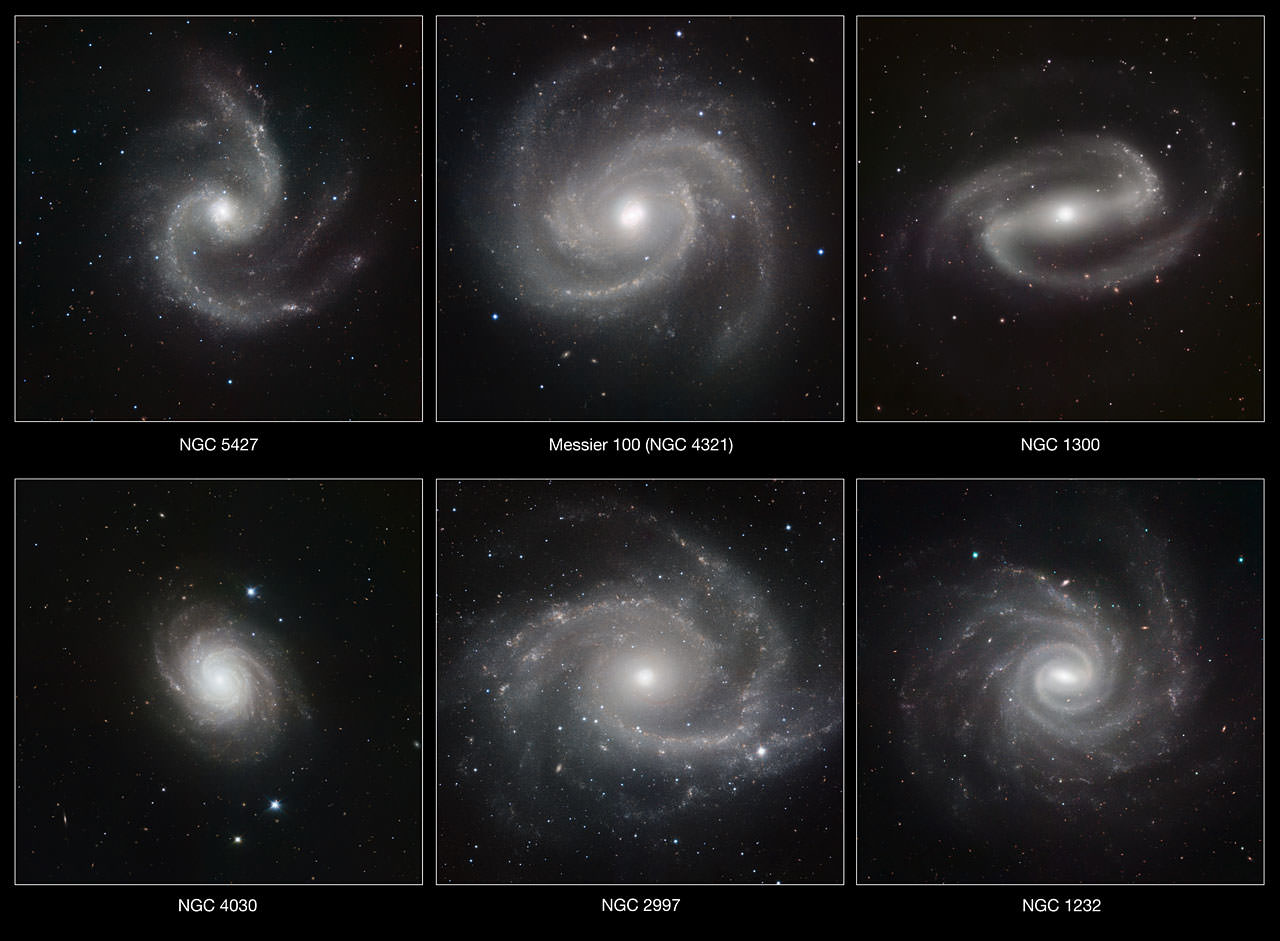[/caption]
Just like its ornithological namesake, the HAWK-I imager on the Very Large Telescope uses its piercing eyesight to hunt down its prey. But the High-Acuity Wide-field K-band Imager draws on its infrared vision to provide new insights into the spiral structures of galaxies. Today, ESO released six stunning new images of bright galaxies, showing exquisite detail with a clarity that is only possible by observing in the infrared. Usually, dust in the arms of spiral galaxies blocks out much of the detail from our view, but observing in infrared light, much of the obscuring dust becomes transparent to its detectors. Compared to another VLT infrared camera called ISAAC, HAWK-I has sixteen times as many pixels to cover a much larger area of sky in one shot and, by using newer technology than ISAAC, it has a greater sensitivity to faint infrared radiation.
The six galaxies are part of a study of spiral structure led by Preben Grosbøl at ESO. Because HAWK-I can study galaxies stripped bare of the confusing effects of dust and glowing gas it is ideal for studying the vast numbers of stars that make up spiral arms, as well as helping astronomers to understand the complex and subtle ways in which the stars in these systems form into such perfect spiral patterns.
[caption id="attachment_76666" align="aligncenter" width="580" caption="NGC 5247. Credit: ESO"]
[/caption]
The first image shows NGC 5247, a spiral galaxy dominated by two huge arms, located 60–70 million light-years away. The galaxy lies face-on towards Earth, thus providing an excellent view of its pinwheel structure. It lies in the zodiacal constellation of Virgo (the Maiden).
[caption id="attachment_76667" align="aligncenter" width="320" caption="Messier 100, also known as NGC 4321. Credit: ESO"]
[/caption]
The galaxy in the second image is Messier 100, also known as NGC 4321, which lies about 55 million light-years from Earth in the Virgo Cluster of galaxies. It is an example of a "grand design" spiral galaxy — a class of galaxies with very prominent and well-defined spiral arms.
[caption id="attachment_76668" align="aligncenter" width="580" caption="NGC 1300. Credit: ESO"]
[/caption]
The third image is of NGC 1300, a spiral galaxy with arms extending from the ends of a spectacularly prominent central bar. It is considered a prototypical example of barred spiral galaxies and lies at a distance of about 65 million light-years, in the constellation of Eridanus (the River).
[caption id="attachment_76670" align="aligncenter" width="580" caption="NGC 4030. Credit: ESO"]
[/caption]
The spiral galaxy in the fourth image, NGC 4030, lies about 75 million light-years from Earth, in the constellation of Virgo.
[caption id="attachment_76672" align="aligncenter" width="320" caption="NGC 2997. Credit: ESO"]
[/caption]
The fifth image, NGC 2997, is a spiral galaxy roughly 30 million light-years away in the constellation of Antlia. NGC 2997 is the brightest member of a group of galaxies of the same name in the Local Supercluster of galaxies. Our own Local Group, of which the Milky Way is a member, is itself also part of the Local Supercluster.
[caption id="attachment_76674" align="aligncenter" width="580" caption="NGC 1232. Credit: ESO"]
[/caption]
Last but not least, NGC 1232 is a beautiful galaxy some 65 million light-years away in the constellation of Eridanus (the River). The galaxy is classified as an intermediate spiral galaxy — somewhere between a barred and an unbarred spiral galaxy.
Source:
ESO
 Universe Today
Universe Today
